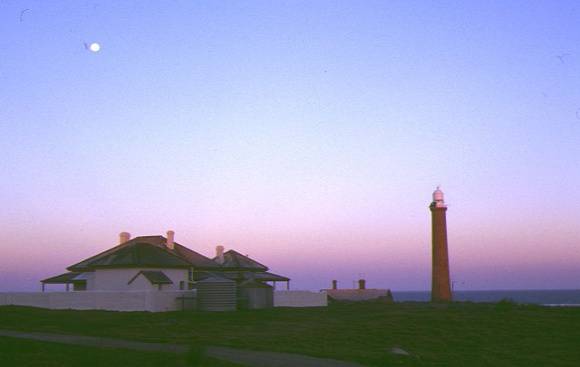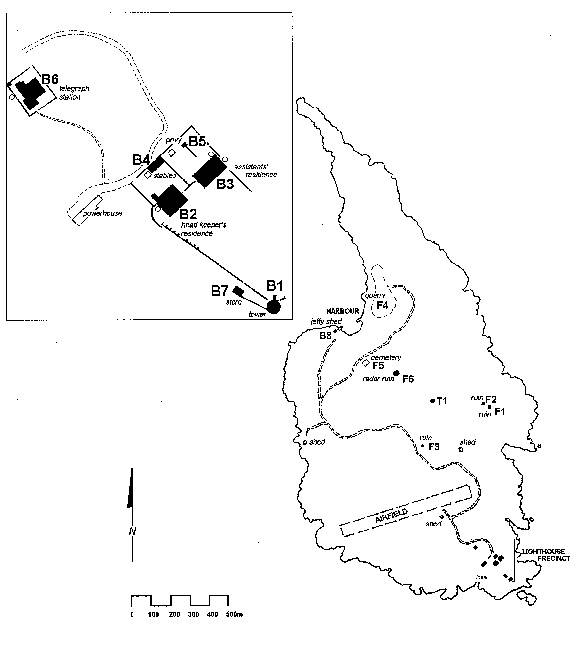| Back to search results » | Back to search page » |
|
GABO ISLAND LIGHTSTATION
LocationGABO ISLAND, UNINCORPORATED
File NumberFOL/16/18772LevelRegistered |
|
Statement of Significance
What is significant?
The original decision to construct a lighthouse on Gabo Island flowed
from discussions between Governors Gipps of New South Wales and Franklin
of Van Diemen's Land in 1841 concerning the desirability of a system of
lights to aid shipping through the difficult waters of Bass Strait. In
1848 a light was completed at Cape Otway but the construction of the
original Gabo Island light was abandoned in the same year because of an
unsuitable site. After the wreck of the SS Monumental City on nearby
Tullaberga Island in 1853 a temporary wooden lighthouse was erected on
the highest point of the island. The present lightstation, consisting of
a tower and three residences, was constructed of the local pink granite
in 1859-62 to the design of Victorian Public Works Department architect
Charles Maplestone. In 1886-88 a telegraph operator's residence was
constructed in mass concrete to the design of NSW Colonial Architect
James Barnet. As well as activity connected with navigation, Gabo Island
has a history of use as a sealing and whaling site, a source of fine
building stone and as a Second World War radar station.
How is it significant?
The Gabo Island Lightstation is of historical, architectural and
archaeological significance to the State of Victoria
Why is it significant?
Gabo Island Lightstation is historically significant as a key component
in the original system of navigation aids planned for Bass Strait in
1841. The location of Gabo Island at one of the "corners" of
Australia adds to this significance. Of all the early lightstations in
Victoria Gabo Island is the most intact retaining all its principal
buildings. The telegraph building is of historical interest as an
unusual example of a New South Wales government building on Victorian soil.
Gabo Island Lightstation is architecturally significant for the high
standard of its building design attributed to Charles Maplestone. The
tower itself is a remarkably well proportioned structure whose finely
crafted pink granite is without parallel in Australia. The profile of
the ltower was replicated at all subsequent manned lighthouses in
Victoria. The residences, with their typical protective walls, are
similar to Maplestone?s other work at Cape Schanck, Wilsons Promontory
and Cape Otway but more finely detailed. The telegraph building is of
architectural interest as an early (1886) use of mass concrete in a
residential building and as the only concrete lightstation residence in Victoria.
Gabo Island, and in particular the area around the harbour, is of
archaeological significance for the potential and known existence of
artefactual remains from many important periods including aboriginal,
early sealing and whaling, early lightstation, quarrying, later
lightstation, military and maritime (shipwrecks).
Group
Maritime Industry
Category
Sealing Site





